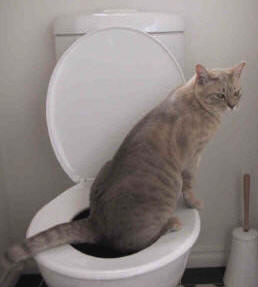Don't Flush Cat Poop Down Your Toilet - Preserve Your Home's Plumbing System
Don't Flush Cat Poop Down Your Toilet - Preserve Your Home's Plumbing System
Blog Article
They are making a few good observations related to Don’t flush cat feces down the toilet overall in this post down below.

Introduction
As cat proprietors, it's necessary to bear in mind just how we take care of our feline close friends' waste. While it may appear hassle-free to purge feline poop down the commode, this practice can have harmful repercussions for both the setting and human wellness.
Environmental Impact
Flushing pet cat poop introduces hazardous microorganisms and bloodsuckers right into the water system, posturing a significant danger to marine ecosystems. These pollutants can negatively influence aquatic life and compromise water top quality.
Health Risks
In addition to ecological issues, flushing pet cat waste can additionally present health dangers to people. Cat feces may have Toxoplasma gondii, a bloodsucker that can cause toxoplasmosis-- a possibly serious health problem, specifically for expectant ladies and individuals with damaged body immune systems.
Alternatives to Flushing
Thankfully, there are safer and extra responsible ways to dispose of pet cat poop. Think about the complying with choices:
1. Scoop and Dispose in Trash
The most usual approach of disposing of cat poop is to scoop it into a biodegradable bag and toss it in the garbage. Make certain to make use of a dedicated trash scoop and deal with the waste quickly.
2. Use Biodegradable Litter
Choose naturally degradable feline litter made from materials such as corn or wheat. These trashes are eco-friendly and can be safely dealt with in the garbage.
3. Hide in the Yard
If you have a lawn, take into consideration burying cat waste in an assigned area far from veggie gardens and water resources. Be sure to dig deep adequate to stop contamination of groundwater.
4. Set Up a Pet Waste Disposal System
Invest in an animal waste disposal system specifically developed for feline waste. These systems utilize enzymes to break down the waste, reducing odor and ecological impact.
Verdict
Accountable animal ownership prolongs beyond giving food and shelter-- it additionally entails appropriate waste management. By avoiding purging pet cat poop down the bathroom and choosing alternative disposal techniques, we can lessen our environmental impact and safeguard human wellness.
Why Can’t I Flush Cat Poop?
It Spreads a Parasite
Cats are frequently infected with a parasite called toxoplasma gondii. The parasite causes an infection called toxoplasmosis. It is usually harmless to cats. The parasite only uses cat poop as a host for its eggs. Otherwise, the cat’s immune system usually keeps the infection at low enough levels to maintain its own health. But it does not stop the develop of eggs. These eggs are tiny and surprisingly tough. They may survive for a year before they begin to grow. But that’s the problem.
Our wastewater system is not designed to deal with toxoplasmosis eggs. Instead, most eggs will flush from your toilet into sewers and wastewater management plants. After the sewage is treated for many other harmful things in it, it is typically released into local rivers, lakes, or oceans. Here, the toxoplasmosis eggs can find new hosts, including starfish, crabs, otters, and many other wildlife. For many, this is a significant risk to their health. Toxoplasmosis can also end up infecting water sources that are important for agriculture, which means our deer, pigs, and sheep can get infected too.
Is There Risk to Humans?
There can be a risk to human life from flushing cat poop down the toilet. If you do so, the parasites from your cat’s poop can end up in shellfish, game animals, or livestock. If this meat is then served raw or undercooked, the people who eat it can get sick.
In fact, according to the CDC, 40 million people in the United States are infected with toxoplasma gondii. They get it from exposure to infected seafood, or from some kind of cat poop contamination, like drinking from a stream that is contaminated or touching anything that has come into contact with cat poop. That includes just cleaning a cat litter box.
Most people who get infected with these parasites will not develop any symptoms. However, for pregnant women or for those with compromised immune systems, the parasite can cause severe health problems.
How to Handle Cat Poop
The best way to handle cat poop is actually to clean the box more often. The eggs that the parasite sheds will not become active until one to five days after the cat poops. That means that if you clean daily, you’re much less likely to come into direct contact with infectious eggs.
That said, always dispose of cat poop in the garbage and not down the toilet. Wash your hands before and after you clean the litter box, and bring the bag of poop right outside to your garbage bins.
https://trenchlesssolutionsusa.com/why-cant-i-flush-cat-poop/

Do you appreciate reading up on How to Dispose of Cat Poop and Litter Without Plastic Bags? Give a remark below. We will be glad to hear your reactions about this entry. We hope to see you back again before long. Are you aware of anybody else who is occupied with the topic? Please feel free to promote it. We treasure reading our article about Can You Flush Cat Poo or Litter Down the Toilet?.
Book Your Appointment Report this page